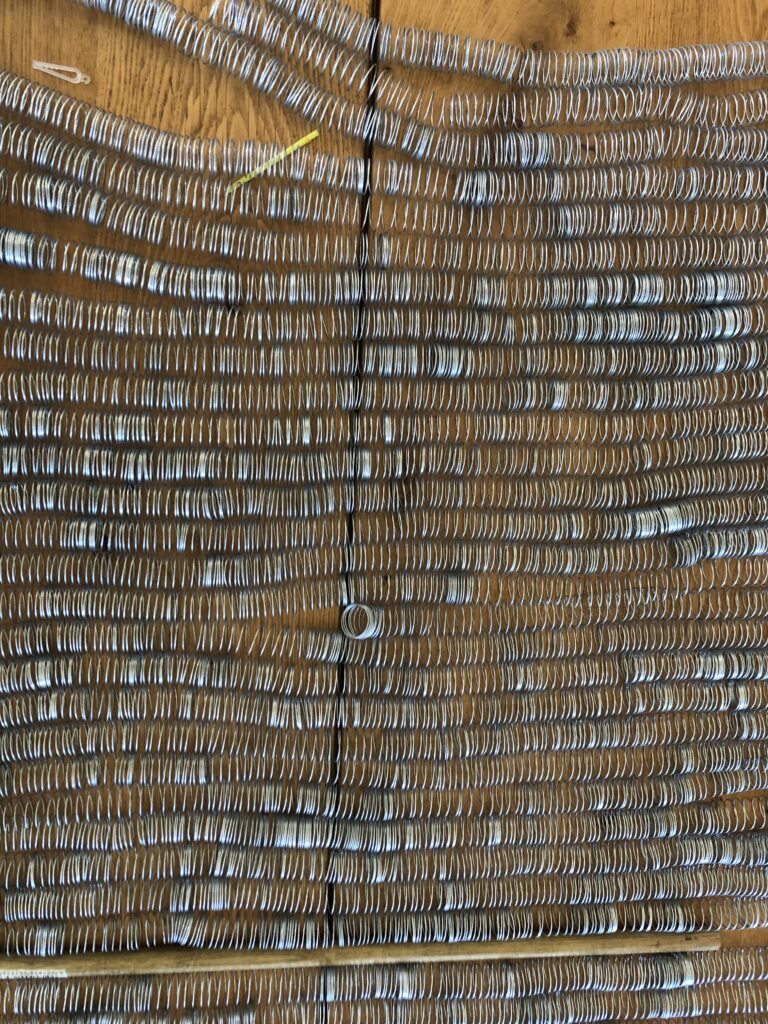
I want to describe a making day – making and listening to podcasts. (I am alone today, and my only other obligation is to keep the Aga stove going—I have no issue with this, as it also keeps me comfortable.)
From around 8:15, I start working. I sit on a couch in front of the Aga – my looped wire is close by. I consider to work around the Verb list of Sierra, but I want to use the time to also listen to podcasts, with sculptures and installation artists. Thinking about my wire nest as an extension of my body – asking myself questions about my own being and belonging. Where do I belong? I want the focus of the making to show the inside out in the current part of my making process – considering openness and vulnerability in my making. I love the material juxtaposition of these thoughts. I do battle with expanding form and the malleabile steel wire – I learn more about manipulating my material. I love my material, but a lot is still to be learned. Earlier this morning, I took some photos outside and made a small video to share the inside. I have channels to act as ‘doors’ into the chambers within the nest – I bring them outside.
My research has given me some insight into the ‘inside’ of a nest. Tunnels which lead into the nest are on average around 15cm in diameter, they are vertical and narrow and up to 25cm in length. There can be as many as 50 chambers inside a nest, with no interconnection between the chambers. The floor, roof and sides are padded with grasses, burry leaves, shredded grass blades and feathers. All the colony members of a nest cooperate to build the foundation and nest chambers, though members tend to concentrate efforts on a given area of the nest mass, here males would focus more on efforts to main the outside than females would do. During the breeding season, only the breeding pair maintains their chamber.
My nest is now around 1.5m in length and around 125cm at the widest part. It weighs 4kg. I have learned that my ‘strings of e loops’ weigh an average of 100g and are, on average, between 70 and 110cm long. This means a looped length, in real material, could be between 8 and 12 meters of wire.
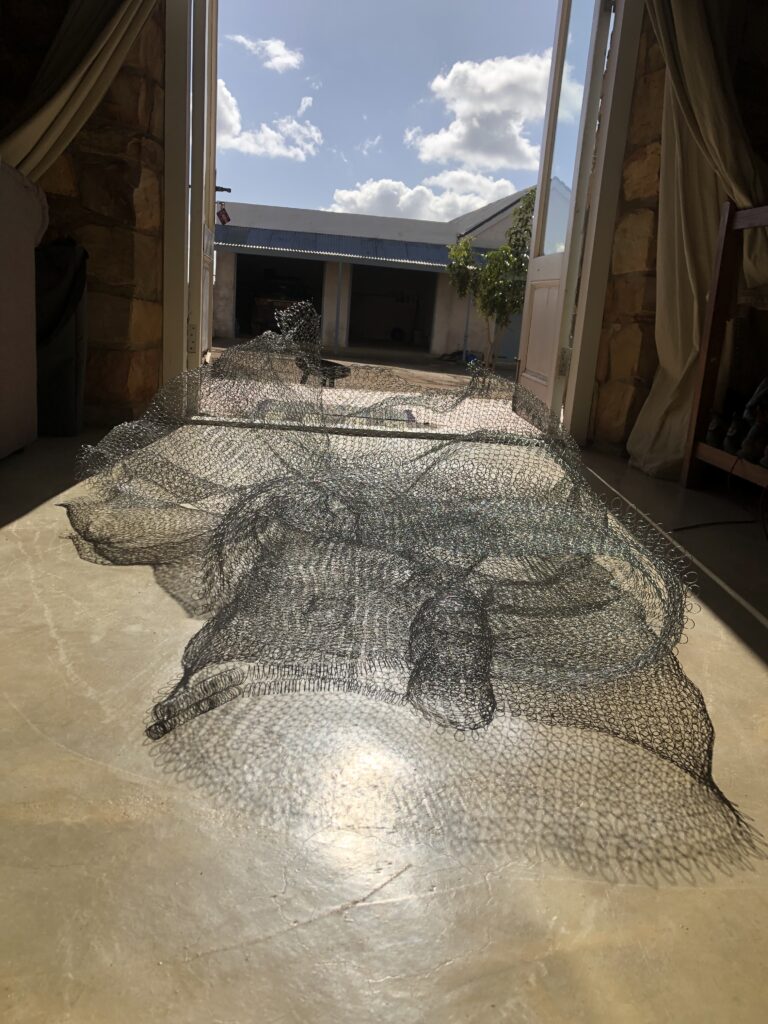
I would like to explore a surprise element in the nest, by ‘exposing’ the inside channels onto the outside of the nest/form. I feel this makes the nest less of a project to reproduce a nest, but an interrogation of my materials and the form I attempt to achieve. I make channels outside on the ‘roof’ area of the nest. I want to consider how people can interact with the nest in a tactile way – climbing into it or putting their arms or face into the nest. As I work, I still try to keep on thinking about the reason for my making a nest – it is this space where vulnerability is in the open, and this contrasts so much with the material’s practical application of being strong. The word ‘binding’ (name of the type of wire) resonates with connecting and is starting to have a resonance with the human condition. The more I learn and up my skills, I see that (steel) wire can be manipulated to appear fragile and delicate.
The podcast I listened to (and relisten to make notes in between) was an inspirational podcast on BBC Sounds, This Cultural Life with Sir Antony Gormley. I stopped regularly to make notes – this also gives my hands a rest form the looping process. My main note from this discussion is that I learned that wire (my material) is the conceptual vehicle to share my nest-making with an audience. This work is embedded in nature as – as I make I interrogate an object. I would like this work to be seen as something that can go into the world – be a signal of my experience of being in this world.
In the afternoon I set out time for photos and some drawing. I used photo images I had taken before the drawing.

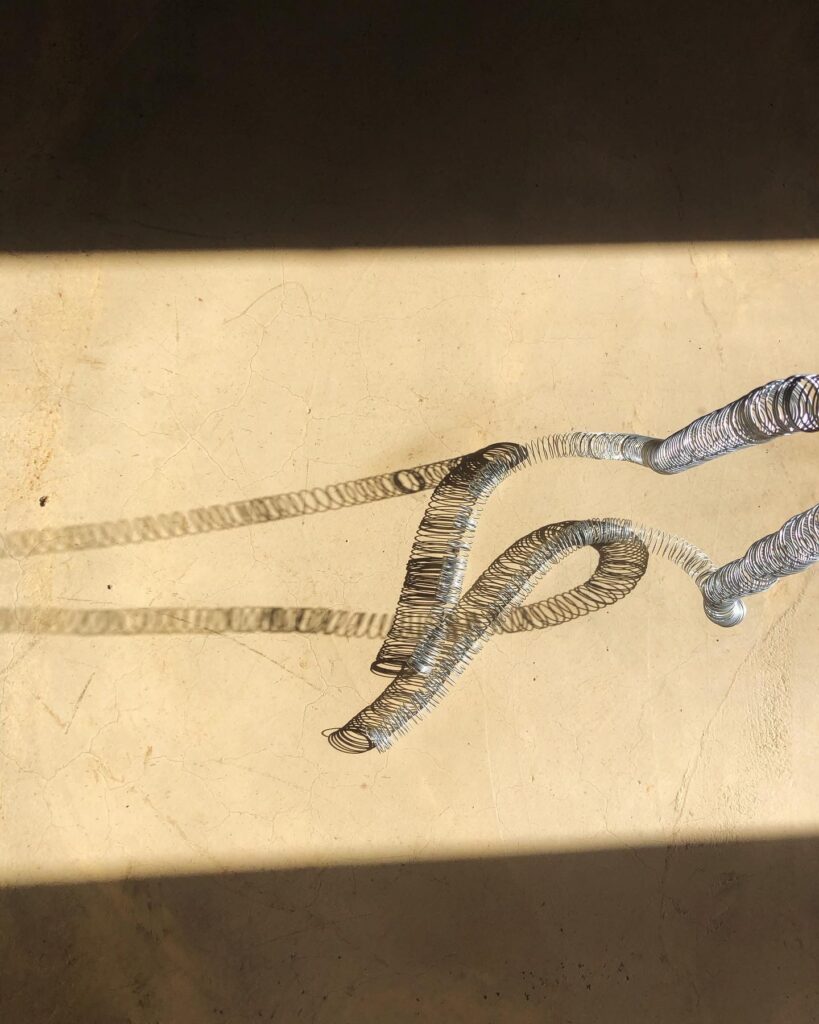
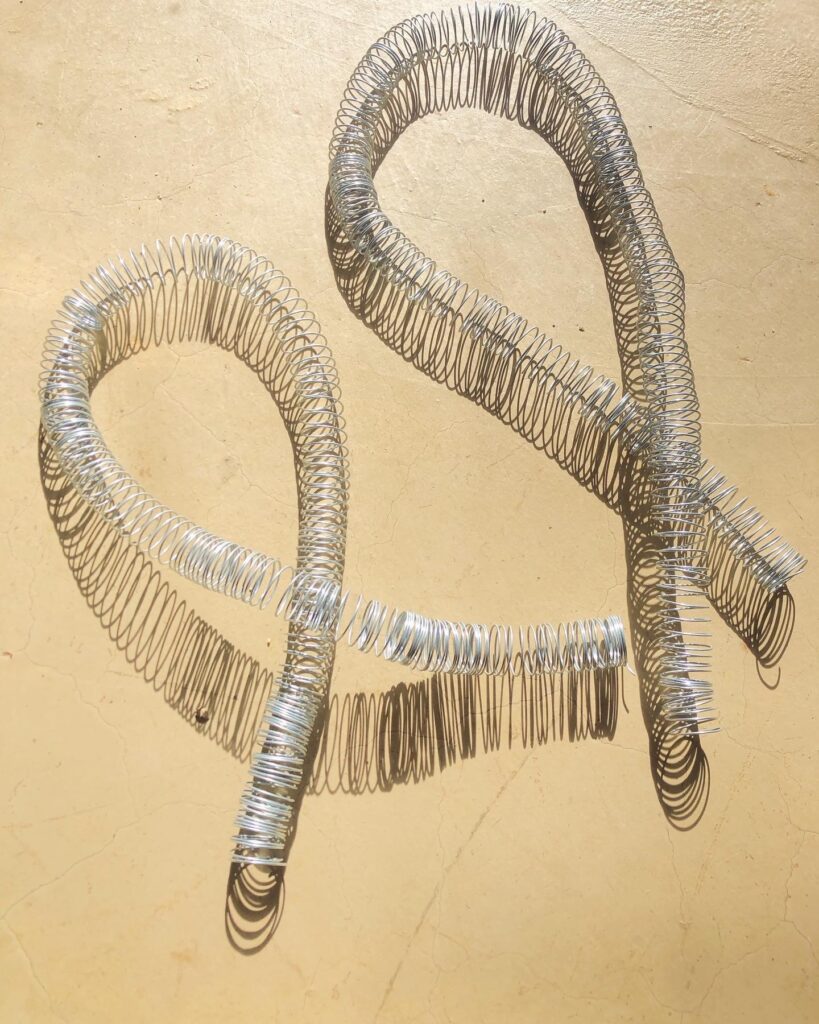
Comments and further discussions with a fellow student on these images were that they are harmonious and another that there are beauty, flexibility and potential in the material. I considered how I enjoy that a material such a wire can allude to all that – and that this is also continuing lines, like drawing.
Drawings followed
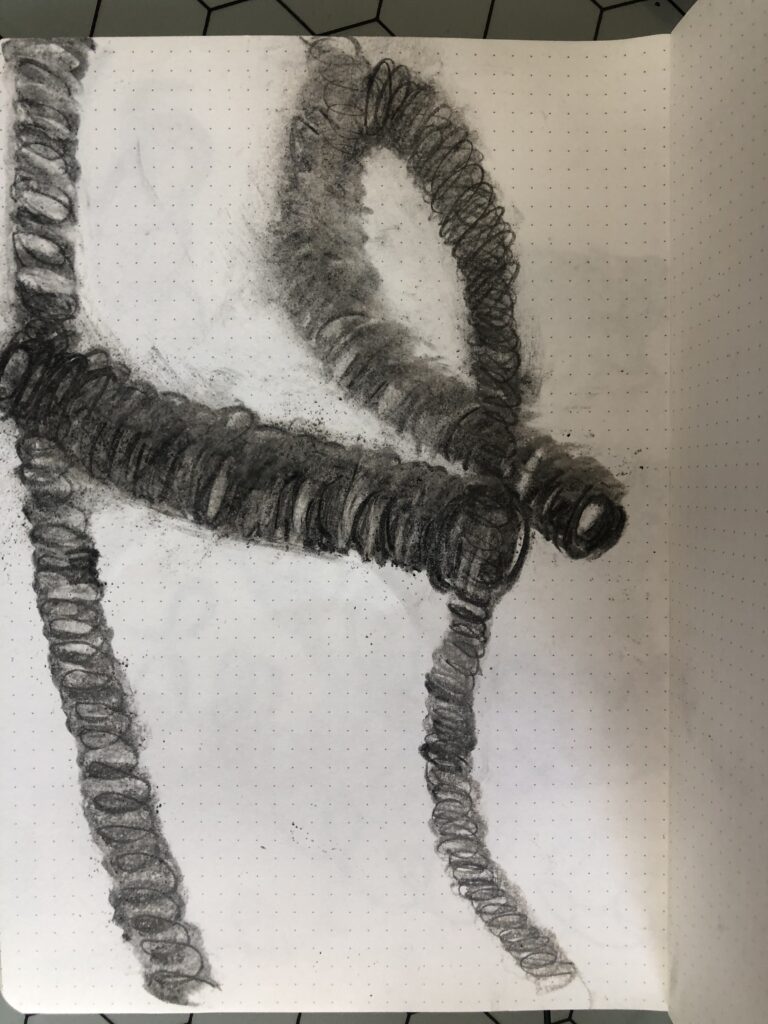
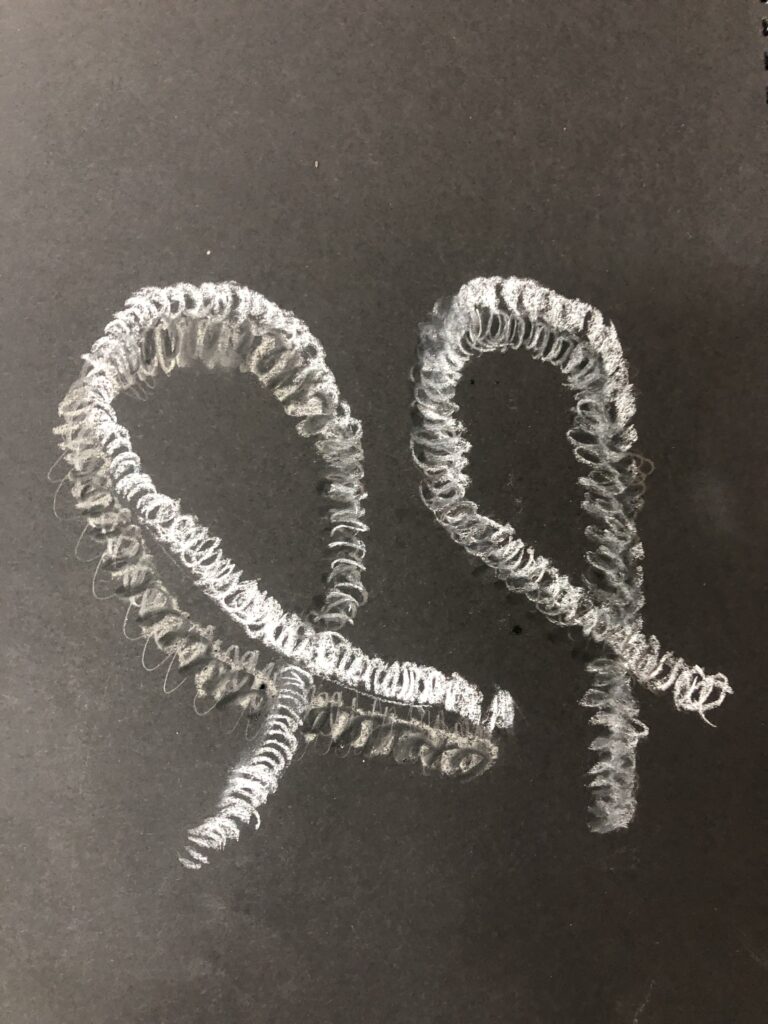
I started with a sketchbook drawing and then worked with chalk on black paper. I enjoyed the drawings because they disclosed my process as a passage of time and care.
Later in that week I shared my making with my small crit group as we were talking about vulnerability and working through trauma in our art.
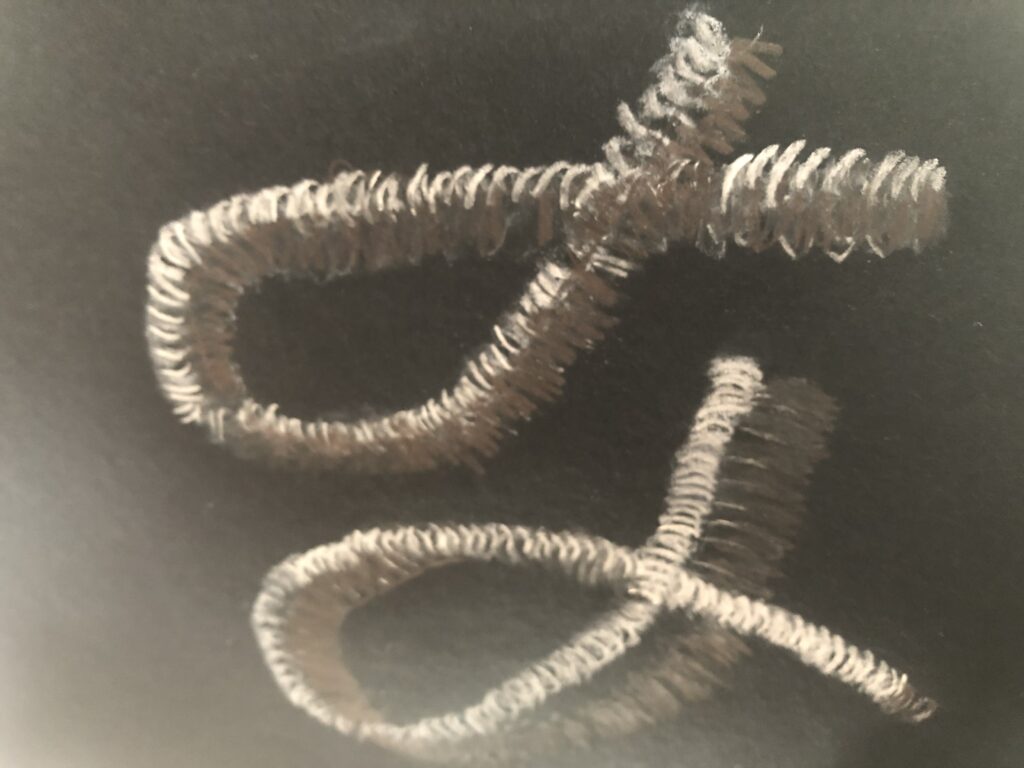
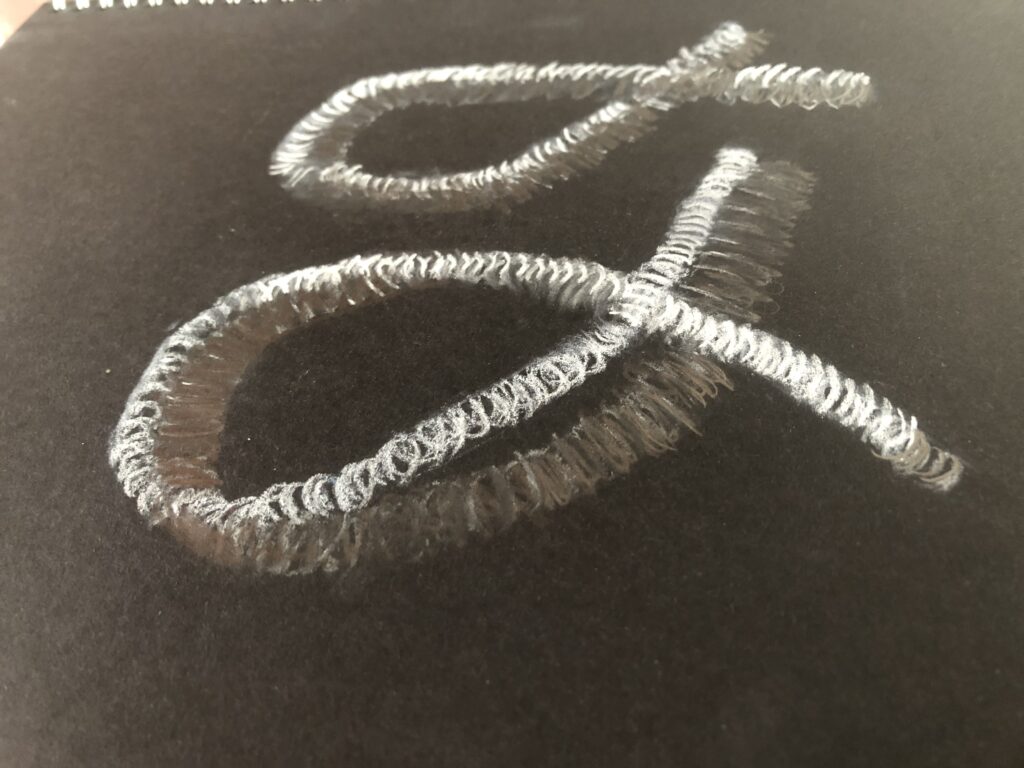
A student translated Lilian Munk Rösing as follows:
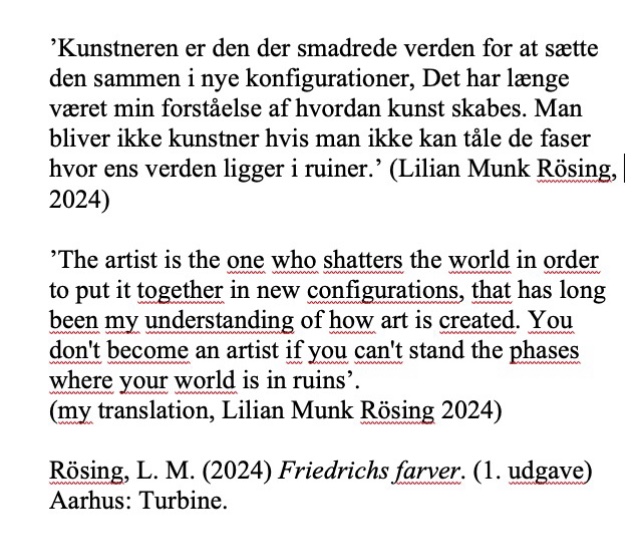
The drawings and discussions with students in my small crit group made me want to research more about durational drawings and how to incorporate them into my work.
The outflow of my day: Research into the work of Kevin Townsend, Anthony Gormley and Nick Cave
I am considering bringing my drawing practice into my BOW. The drawings of the artists Townsend and Gormley remind me of time. Townsend’s work is about durational drawing, also a performance, and it challenges my making process in terms of scale and sharing process. For Townsend, time becomes both site and material, and he suggests that when he starts with these significant works, each mark embodies only the moments of its making and exists as a record of both attention and intention. I like that the audience can also experience that sense of being in a moment during his performance drawings. (a reality experience?) In my own making, I enjoy how each mark in these drawings shows the hand of the artist – the making becomes deliberate actions and intentions
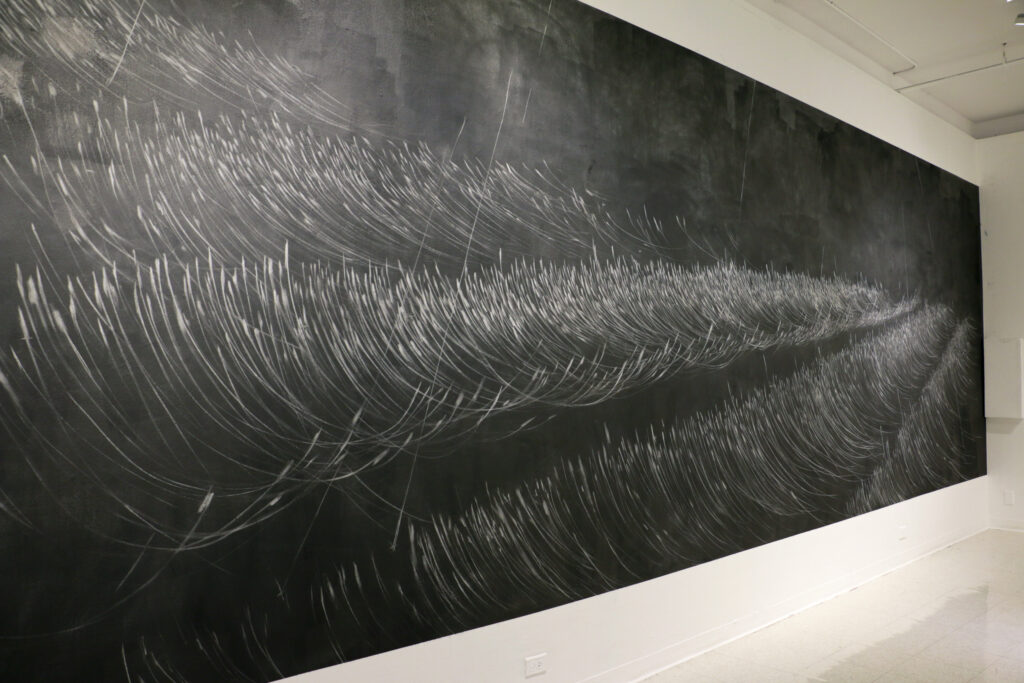
In one of Townsend’s articles on Obsessions, he refers to Luis Camnitzer ( E-flux Journal 56th Venice Biennale), who said that “the ‘real work’ of a contemporary artist is not wholly bound up in the object or event produced and instead resides in the practice and labour of its creation.”
Between this research, I remembered an artist I had looked at earlier in my studies, Tehching Hsieh and re-read a New York Times article I had saved. The following comments by the writer of the article, Andrew Russeth, now make even more sense when I look at my practice and where I find myself: “…… it is work that addresses what it means to live with uncertainty and to keep going, often with no clear end in sight.” and “It is no wonder that art about waiting seems to emerge in periods of trauma and crisis, whether personal or societal.” Hsieh explained that his work is about passing the time rather than how to pass the time.
Nick Cave inspired me after reading a transcript of his conversation, “Art as a means of working through grief and trauma”.
REMINDING MYSELF OF the WHAT and HOW of a VIRTUAL MAKING DAY (OCA day a while ago, with the OCA EU group and led by tutor Caroline Wright)
- We will be joining each other online to share and exchange ideas, processes and approaches in making work
- The focus will be on practice, with ample opportunity to discuss and see examples of work.
- We will explore and experiment side by side across the virtual miles
- We will share our processes, learn from others and discuss the development of ideas and visual research.
- Students are asked to prepare a short statement of no more than six sentences about their work and to bring one piece of work to the session
- Students are asked to be in a place where they can make work and to have their materials ready with them for the session
- Students can join the session using a laptop, desktop or tablet that has a camera, speakers and microphone and must have a set of headphones
- Students are asked to switch off any disturbing items, and to make themselves comfortable to be able to be present during the entire duration of the virtual making day. There will be plenty of breaks during the day
- Caroline will talk about her practice and working from her studio, will share her own making processes with students
My nest
currently around 1.5m long and 115 on the widest part
Richard Serra, Verb List (1967-68)
To roll.
To crease.
To fold.
To store.
To bend.
To shorten.
To twist.
To dapple.
To crumple.
To shave.
To tear.
To chip.
To split.
To cut.
To sever.
To drop.
To remove.
To simplify.
To differ.
To disarrange.
To open.
To mix.
To splash.
To know.
To spill.
To droop.
To flow.
To curve.
To lift.
To inlay.
To impress.
To fire.
To flood.
To smear.
To rotate.
To swirl.
To support.
To hook.
To suspend.
To spread.
To hang.
To collect.
Of tension.
Of gravity.
Of entropy.
Of nature.
Of grouping.
Of layering.
Of felting.
To grasp.
To tighten.
To bundle.
To heap.
To gather.
To scatter.
To arrange.
To repair.
To discard.
To pair.
To distribute.
To surfeit.
To compliment.
To enclose.
To surround.
To encircle.
To hole.
To cover.
To wrap.
To dig.
To tie.
To bind.
To weave.
To join.
To match.
To laminate.
To bond.
To hinge.
To mark.
To expand.
To dilute.
To light.
To modulate.
To distill.
Of waves.
Of electromagnetic.
Of inertia.
Of ionisation.
Of polarisation.
Of refraction.
Of tides.
Of reflection.
Of equilibrium.
Of symmetry.
Of friction.
To stretch.
To bounce.
To erase.
To spray.
To systematise.
To refer.
To force.
Of mapping.
Of location.
Of context.
Of time.
Of carbonisation.
To continue.